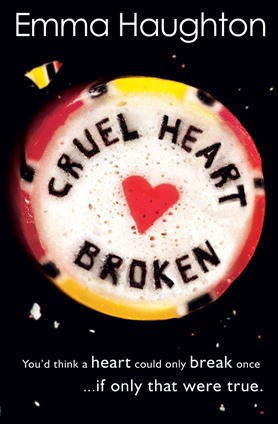So you’re interested in writing a YA thriller? Or maybe you just want to know what it involves?

Okay, let’s kick off with the YA bit. Obviously that means you’ll have a teenage protagonist, a young adult perspective to your story. This is fertile ground, in thriller terms. I take normal teenage girls who find themselves in abnormal and often mystifying predicaments, and bring my reader into their world. The teen perspective offers something fresh, naïve in the best sense of the word, untainted by all the graft and grind of adult life and all the disappointments and difficulties that can bring.
From an author’s point of view, however, it can be tricky. There’s no relying on police procedural to unravel the mystery. Or Mum and Dad. In YA, you must give agency to the teen, not the adults around them – your young protagonist has to solve or resolve her own dilemmas. I’d argue this gives the genre universal appeal, offering engaging examples of courage and resourcefulness in the face of monumental odds. Characters you can really root for.
So what about the ‘thriller’ part of the equation? You’ll find a clue there. Thrillers should be thrilling; in other words, focus on what your reader will feel. Where adult thrillers often revolve around plot – what actually happens – in YA you can’t get away with that. Reader experience is paramount, because teens have plenty of other things competing for their attention – you either pull them into the story fast and hard, or risk it being abandoned.
How do you do that? It all boils down to this: from the very first sentence your reader must want to know what happens next. And having piqued their interest, whatever does happen must contain plenty of conflict. A thriller should make you curious, draw you into a web of intrigue – and then surprise you. It should offer the opportunity to try on trouble, risk-free; to find out how it might feel to face bewildering and often threatening situations. The tension of the story has to keep people turning the page.

In psychological thrillers in particular, you want your readers to ask themselves, how would I feel if this happened to me? How would I react? What on earth would I do? When you’re involved in a book at that level, it makes for a much more satisfying, emotional read, and that’s crucial. Few readers, particularly teens, read novels as an intellectual exercise. They’re not there to learn facts – they have school for that. They’re in it for the ride, the thrill, the experience. To feel things, and hopefully feel them strongly. To be moved.
Hang on to that when you’re writing. Think hard about the emotional communication from writer to reader. Keep it in your awareness, from the planning stage to the final polish. Explore how best to evoke emotion e.g.. by foreshadowing problems, or elongating time in moments of high tension, to extract the maximum of suspense.
Successive rewrites and edits should focus on gaining clarity, and uncovering the emotional heart of your novel. Not only what happens to whom, but on how your characters feel. I write first-person stories, which means my protagonist’s internal world is paramount. Once I have the mechanics of plot in place, I concentrate on motivation, and particularly emotion – how my central character feels about what is happening to her, and to those around her.
Remember that what your main character experiences is, to a large degree, what your reader will experience too. People read books to live vicariously, to step into another person’s shoes, to live in their heads and feel their emotions. So when my protagonist is scared, I want my readers’ hearts to beat a little faster. When she is perplexed, I want my readers to scratch their own heads.
As a writer, though, it can be easy to forget to signal emotion, especially in the early stages of drafting a book. We all have a tendency to skim over character reactions as we concentrate on the nuts and bolts of the story. I find in later drafts I have to consciously add in emotional tags and clues, such as those visceral bodily reactions that signal how characters are responding to the situation they find themselves in: ‘my heart flipflopped with joy’, ‘fear turned my pulse into a drumbeat, beating faster and faster’, ‘his face twitched with anger.’ You get the picture.
Part of the process of writing a novel – arguably the most important part – is firming up what you want, as the writer, your readers to experience. Not just in terms of identifying with your characters, but also in terms of their own reader reactions. What do you want your audience to feel at every stage of the book? What do you want them to take away when they close the final pages? What is the emotional core of your novel?
This isn't always something you hit upon immediately, but something you refine as you go along, as the process of writing and exploring the story clarifies its purpose.
Of course this isn't an exact science. Readers’ mileage may vary – a quick scan of reviews on Amazon or Goodreads will show you that. But it’s important, I think, to hold that ideal reader in your head, as you write. To keep that focus on your audience.
Of course, when it comes to YA, that’s a slippery concept. Who is our audience? Teens, yes, but a report by Bowker Market Research found 55 per cent of people who buy YA books are actually fully-fledged, card-carrying grownups. Don’t let that distract you though. Keep your attention on writing the most intriguing, most suspenseful story you can, and give your audience the emotional ride of their lives. Do that, and you’ll attract plenty of enthusiastic readers, however old they may be.
Emma Haughton is a one-time family and travel journalist turned YA writer. Her books include Now You See Me, nominated for the CILIP Carnegie medal, and Better Left Buried, picked as one of the Independent’s best teen reads for 2015. Her third novel, Cruel Heart Broken, is published in July 2016. Visit Emma’s website or connect with her on Facebook.You can also follow her on Twitter.
Comments